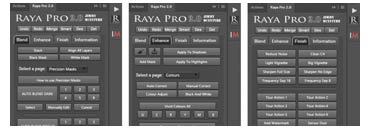On this page, you can find an updated list of the best Microstock and Macrostock agencies where you can sell your pictures and stock footage.

In the past few years, I had the chance to work with several microstock websites. Not all of them have proved to be a good choice. Some agencies are really good and can help you sell many images; others are a waste of time. On this page, I’ll regularly update my personal list of the best Microstock and Macrostock websites to sell your images.
Best Microstock and Macrostock websites

Adobestock has managed to carve out an important place in the world of microstock thanks to its commission model and asinine decisions by other agencies (the latest of which is Shutterstock). After buying Fotolia, it has continued to grow and is set to become increasingly important.
The real problem is that it does not accept photos uploaded with an editorial license, thus limiting sales possibilities. If this should change, I imagine that in a short time, Adobestock will become the first agency in terms of the number of sales.

It’s probably the most famous Macrostock agency. A characteristic of Alamy is that the curators don’t check every picture but only a small sample. This means the number of photos uploaded is very high, and the competition is strong. It can also take a long time between the first upload and the first sale. You’ll have to be patient but eventually make good money with Alamy.
Alamy used to pay 50% commission to photographers until 2018. Unfortunately, starting in 2019, they reduced it to 40%. On top of that, I also noticed a drop in sales.

Eightstock is a newish agency based in Hong Kong. I only recently became a contributor, but I already have a good impression. I had some questions and got to talk to real people working there, not a chatbot.
They also have a pretty good affiliate program that anyone can join. You’ll get paid 10% of any sales made by anyone you refer to. Most importantly, you earn at least 0.23$ per download, but it can be more depending on how many pictures you sold in the previous 12 months. I’ll keep an eye on this agency for sure.

Before the creation of newer agencies such as Shutterstock, iStockphoto didn’t have any alternative and was a real goldmine for photographers who joined quite early: the average quality of the pictures was very high (thus attracting the best clients), the prices were high as well and on top of that if you were an exclusive contributor, you would also sell on Getty Images (back when it was a decent agency) Since then many things have changed and today iStock is an agency in decline.
Now, iStock is just a shadow of the agency it used to be.

Getty Images is the giant in the world of stock photography. The success of this agency is very much linked to the business model: they bought out most of the competitors and made several agreements to host collections from other sites on their website. Average sale prices have unfortunately been quite low, but despite this, Getty still seems to be the secret dream of many photographers.
You can’t upload directly, as Getty is not accepting new photographers. I managed to get approved several years ago through Flickr. If you want to try to become a Getty Images contributor, here I explain how to do it, but remember that the commissions are really low: about 20%.
OTHER AGENCIES
Besides the agencies I mentioned, I upload my content on these other websites: Dreamstime, Shutterstock, Motion Array and ClickAlps.
The sales per agency are quite low, but when you add them up, they account for about 1/5 of the total revenue. If you’re wondering whether or not it’s worth continuing to work with these agencies, the answer is it depends: some months you’ll sell a lot, some months you won’t. But I recommend diversifying as much as possible if it doesn’t involve wasting too much time.
However, if I see that an agency doesn’t make me earn much within a reasonable amount of time, as with Depositphotos and 123R, I stop uploading my content there.
Sell photos and videos as NFT and AI-generated images

I wrote a detailed article explaining how NFTs (Non-Fungible Tokens) work and if you can monetize your photos and videos through this tool.
I recommend you read it because it’s a relatively new technology that may have a lot of potential.
It’s a rather complicated topic, but in my opinion, it cannot be ignored.
If you want to know more about AI-generated images, check out this article.
What about Shutterstock?

Shutterstock has unfortunately gone from being the best to be the worst agency in just 6 days. Since June 1st, 2020, it changed its commission model and cut the earnings of the contributors by as much as 70%. I strongly advise against starting to upload your best photos to Shutterstock. An alternative would be uploading your best content on Alamy or Adobestock and then dumping the other pictures on Shutterstock.
Best websites to sell Stockfootage

I recently signed up with a new agency called Motion Array. The commission model is very complicated, and long story short, the sales prices per file are some of the lowest I’ve ever seen. However, this agency does have one notable advantage: the sale volumes are quite high, and for this reason, in recent months, it has become my best-performing agency for stock footage content.
The main problem Motion Array suffers from at the moment is the file upload method, which is extremely slow and obsolete, and the review time il also super slow. Let’s hope they fix it.

Many microstock websites allow you to sell stock footage, but Pond5 is one of the best options. Don’t expect to sell any image with them, but for some reason, they do pretty well when selling videos. I don’t have many videos since I’m more into photography, but I did sell a few. Pond5 lets you choose the sale price and keeps only 50% of the revenue.
Best tools to edit your pictures and videos
RAYA PRO

I often use GDN and ND filters, but they are sometimes not enough because the scene’s dynamic range is too high or the horizon is not straight. In this case, a double exposure can be useful. Raya Pro is, in my opinion, one of the best Photoshop Panels for blending two or more exposures.
You can read my review of Raya Pro here.
LUMINAR PRO

Luminar Neo combines the power of artificial intelligence with Skylum’s experience in creating photo editing software. It helps to perform complex operations such as replacing the sky and removing power lines in just a few clicks. I’ve been using Skylums’ software for years and I recommend them.
Here, you can read my complete review of Luminar Pro.
LRTIMELAPSE

Finally, if you are into Time-lapse Photography, I’m sure you know and use LRTimelapse. The reason is simple: it’s the best software to create time-lapses, especially if you want a smooth day-to-night transition. Without this software, the time-lapse will suffer from an ugly effect called flickering. Time lapses are a good option to increase your sales on stock-footage websites. Here, you can read my review of this great software.
SANTECH

Since 2014 I’ve been using Santech’s laptops, an Italian company specialising in custom-assembled laptops. Being a digital nomad, I can’t afford the “luxury” of working with a desktop workstation with a 32-inch Eizo monitor, but with Santech laptops, I have never had the feeling of sacrificing performance. The prices are very affordable, and there is the possibility of adding or removing hardware according to your needs.
BEST ONLINE COURSES TO IMPROVE YOUR PHOTOGRAPHY SKILLS
If you want to progress and improve your photography skills, spending money on a good video series is the best suggestion.
The advantage of online courses, compared to workshops, is that they allow you to learn new things while sitting in your home, and if you don’t understand something, you can always watch the video repeatedly. There is an infinite number of more or less valid courses, and before buying any, I suggest you check the online reviews. This is because you will often not learn anything new: the courses are often a gold mine for those making them. That being said, here’s a list of what I think are very good courses that will teach you something new.
Drone Launch Academy – Aerial Video A to Z

Drone Launch Academy is a video course created by Alex Harris, an experienced video editor, after-effects animator, camera operator, and professional drone pilot. The videos get straight to the point and cover practical topics to help you become a successful drone pilot. If you are interested, take a look at my review.
Advanced Cityscape and Landscape Photography by Elia Locardi and Fstoppers

Elia Locardi is one of the past few years’ most famous and successful photographers. He has established a real personal brand, and the number of collaborations with international brands is countless. One of the most challenging projects led him to collaborate with the guys at Fstoppers, and in recent years, they have created a series of video series on photography that has set a new standard in quality. I’ll be honest: Elia courses are currently the best you can find on the market but are also among the most expensive. Currently, there are 4 courses of increasing difficulty, and you’ll learn to master Photoshop and Lightroom. If you want more information, I reviewed 3 of the 4 courses of Elia, and you can find them here: a review of Landscape Photography 1 and a review of the most advanced courses.
Finally, I want to mention one of the best websites out there focused on stock photography and videos: Brutallyhonestmicrostock, managed by Alex, a veteran in the microstock world. He regularly talks about new agencies and possible strategies to increase sales. A very good feature of his blog is that he publishes his revenue every month, which is divided by agency. This will give you a clear idea of what to expect if you decide to contribute to a specific agency he’s also a contributor of. Definitely recommended.
Don’t forget to check out my other photography-related articles and subscribe to my newsletter.